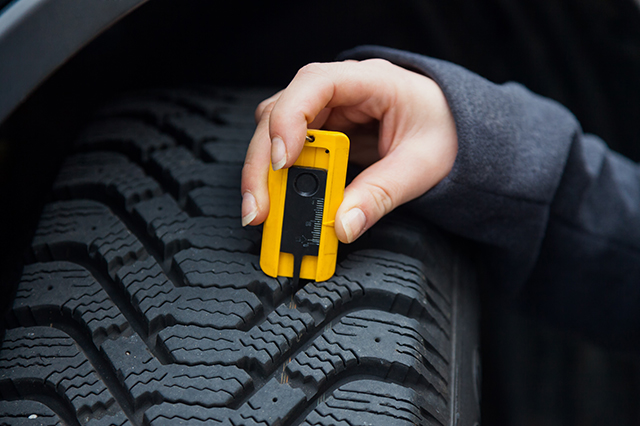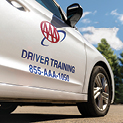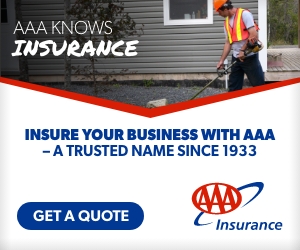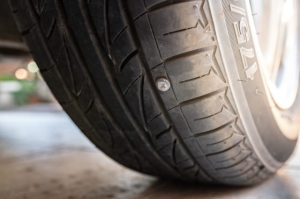Proper car care can improve your vehicle’s performance, keep you safe on the road and save you significant amounts of money.
We’ve rounded up our top car maintenance tips to help you get started.
Washing and Waxing
Keeping your car’s exterior in good condition isn’t just aesthetically pleasing. Regular washing can help maintain the vehicle and keep its value, thus saving you money now and earning you more money later should you try to resell it. Once your car is clean, you’ll want to keep it that way. Waxing forms a protective coat over the paint, which will help repel road grime, bird droppings and tree sap.
Here are a few tips to properly wash and wax your car:
- Move your car out of direct sunlight and make sure it is not hot to the touch.
- Get the vehicle good and wet to wash off any accumulated dirt, grime and other debris.
- Use a dedicated car wash soap, not hand or dish soap that can strip off the car’s protective wax.
- Use the two-bucket method. One bucket will have the clean, soapy water, and the other is where you’ll drop the dirty water.
- Dry your car with a microfiber cloth. Once dry, spread a small amount of wax onto your cloth or pad. Then apply it to the car using a circular motion and steady pressure. Work the wax into the paint until it’s completely absorbed.
- To buff, use a clean towel or microfiber cloth, gently buff the paint until you get the shine you’re looking for. This step ensures that the wax fully bonds with the paint.
- And though you’re focusing on the exterior, don’t forget to get around to cleaning the car’s interior as well.
Headlights
Unless the bulb burns out, headlights are probably the last thing you think about when it comes to car maintenance. But headlights can begin to deteriorate after as little as three years. AAA research found that deteriorated headlights produce only 22% of the light output (low beam) that new, original headlights provide.
AAA recommends routinely checking headlights for discoloration, such as a yellowed or cloudy appearance. If it’s difficult to see the bulb through the lens, have the headlights replaced or restored as soon as possible.
Battery Maintenance
Most of the roadside assistance calls AAA Northeast receives are for battery issues. But many of these issues can be avoided with proper car maintenance. These tips can help to keep your car battery in top shape and ensure you don’t get stuck in your tracks.
- Drive your car for at least 30 minutes once per week to maintain a full state of charge. Shorter drives can discharge the vehicle battery over time.
- Battery terminals require regular removal and cleaning in many environments. Periodically disconnecting the car battery to clean its terminals with water, baking soda and a specialized terminal cleaning brush can help extend its life.
- If you accidentally drain the battery and need a jump-start, your battery needs to be recharged properly on a battery charger, likely for several hours or more. Years ago, we may have let a car run for an hour or so to recharge the battery, but this will not properly recharge batteries in today’s cars, and you will likely find yourself stuck again with a no-start after turning the car off. There is no set amount of time that can be relied upon to recharge a battery by running its engine. Trust AAA Car Battery Service to test your battery and charging system, or anytime you need a jump.
- All car batteries will eventually die. The average battery life in the Northeast is between three to five years. As they age, batteries should be checked yearly, ideally before cold temperatures hit.
Oil and Fuel
Your car needs several different fluids to run. Two of the most prominent are fuel and oil.
You may not give much thought to the gas you put in your car, but there are numerous types of fuel available. Choosing the right one can improve your vehicle performance and potentially help the environment. Opting for the wrong one can seriously damage your car.
In the past, it was recommended to change your car’s oil every 3,000 miles; however, today’s engines are built to go 5,000 miles or more between oil changes. To get the proper schedule for your car, refer to the manufacturer’s recommendation in the vehicle owner’s manual.
Regardless of how often you need to change your oil, you should still check the vehicle’s oil levels every month. Fortunately, checking your oil is one of the more basic car maintenance tasks.
Here’s how you do it:
- Make sure the engine is cold or has been turned off for at least 10 minutes.
- Locate the dipstick, which will have a hook or ring on it, and pull it out. Wipe off any oil with a clean, lint-free rag so you can see the markings.
- Put the dipstick back in place and pull right back out again and look at the markings.
- If the oil reaches the high line where it says full, then you’re all set. If it’s down at the bottom line, then you’re running low and need to add oil. Add oil until the level is up to the full or safe mark without overfilling.
Tires
Tires are the only parts of the car that touch the road, so their importance cannot be overstated. A tire that is worn down or not properly inflated could have disastrous effects on the roadways. Additionally, proper tires – in good condition – improve your car’s fuel efficiency, which will save you money.
A few things to consider when checking your tires:
- Take a good look at each tire to see if there are any visible signs of damage. These include tears, bulges, bumps or wayward nails stuck into the tread.
- Check tire pressure and use the manufacturer’s recommended tire pressure as your guideline.
- Keep a close eye on tire pressure when the outside temperature shifts. As a rule of thumb, when the temperature drops 10 degrees your car’s tires can lose between one-half and one pound of air pressure. Add or reduce the air in your tires to stay at the manufacturer’s recommendation.
- Check tire tread by using a quarter. If the tread does not touch the top of Washington’s head, then you have less than 4/32 inch of tread and your tire should be replaced.
Have an electric car? Get tips on how to keep it in top shape on AAA’s EV Platform.
If you have any other basic car maintenance questions, ask our Car Doctor John Paul. Or you can always head to a AAA Approved Auto Repair facility and leave your car needs to the pros.
AAA members can save on automotive replacement parts and accessories at NAPA.
| Car Cleaning Tools | ||||
|---|---|---|---|---|
Top | BLACK+DECKER dusbuster Handheld Vacuum for Car, Cordless, Gray (HLVB315JA26) | PrimeEligible | Buy Now | |
 | TICARVE Cleaning Gel for Car Detail Tools Car Cleaning Automotive Dust Air Vent Interior Detail Putty Universal Dust Cleaner for Auto Laptop Car Slime Cleaner | PrimeEligible | Buy Now | |
 | Invisible Glass 92164-2PK 22-Ounce Premium Glass Cleaner and Window Spray for Auto and Home Streak-Free Shine on Windows, Windshields, and Mirrors Residue and Ammonia Free Tint Safe, Pack of 2 | PrimeEligible | Buy Now | |
 | Chemical Guys MIC493 Chenille Premium Scratch-Free Microfiber Wash Mitt, Lime Green, 9.6" x 2.3" x 7" | PrimeEligible | Buy Now | |
 | Leather Honey Leather Conditioner, Best Leather Conditioner Since 1968. for Use on Leather Apparel, Furniture, Auto Interiors, Shoes, Bags and Accessories. Non-Toxic and Made in The USA!… | PrimeEligible | Buy Now | |
 | Wagner Spraytech C900054.M, 905e AutoRight SteamMachine Multi-Purpose Steam Cleaner & HomeRight C900066.M SteamMachine Large Brush and Mop Head | PrimeEligible | Buy Now | |
 | Wet or Waterless Car Wash Wax Kit 144 oz. Aircraft Quality for your Car, RV, Boat, Motorcycle. Guaranteed the Best Waterless Car Wash. Anywhere, Anytime, Home, Office, School, Garage, Parking Lots. | PrimeEligible | Buy Now | |
 | Zwipes 604-7 Large Microfiber Cloth, Ultra Plush & Absorbent, Perfect Cleaning, Wash or Car Detailing-24 x 16" (6 Towels + 1 Free), 7 Pack, Mini Water Monster | PrimeEligible | Buy Now | |
 | Mothers Mag & Aluminum Polish (10 oz.) Bundle with Microfiber Cloth & Foam Pad (3 Items) | Prime | Buy Now | |
 | Meguiar’s Quik Scratch Eraser Kit, Car Scratch Remover that Removes Blemishes, Includes Meguiar’s ScratchX, Drill-Mounted Pad, Microfiber Towel - 3 Count (1 Pack) | Prime | Buy Now |
One Thought on “Basic Car Maintenance 101”
Leave A Comment
Comments are subject to moderation and may or may not be published at the editor’s discretion. Only comments that are relevant to the article and add value to the Your AAA community will be considered. Comments may be edited for clarity and length.

















I try to educate myself more about my car and these articles are always helpful, I value my car as an important asset so to take care of that asset I also have know some of the best mechanics in New York City.